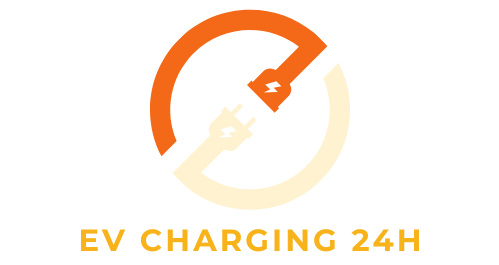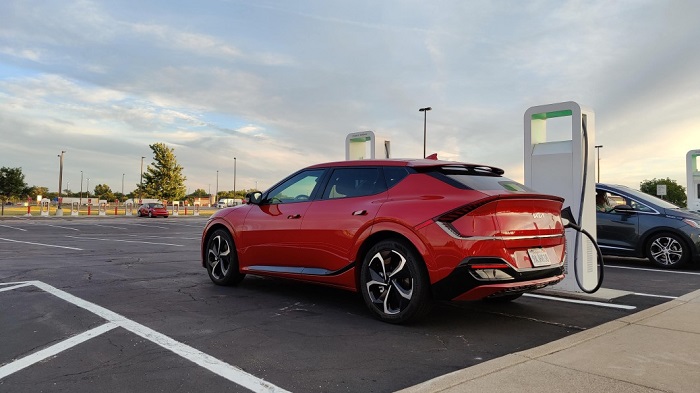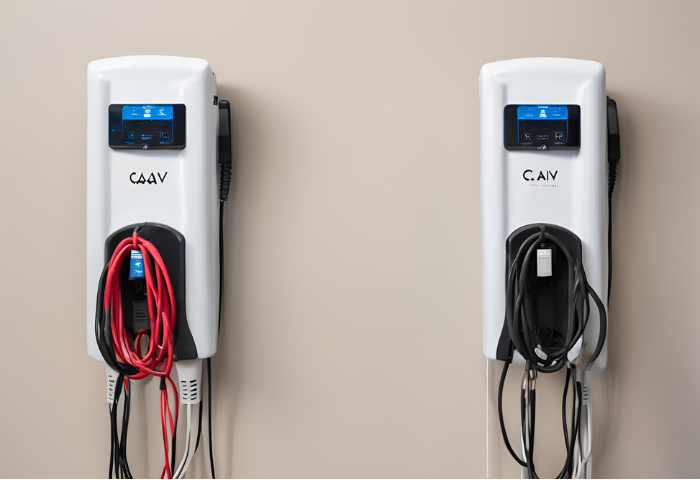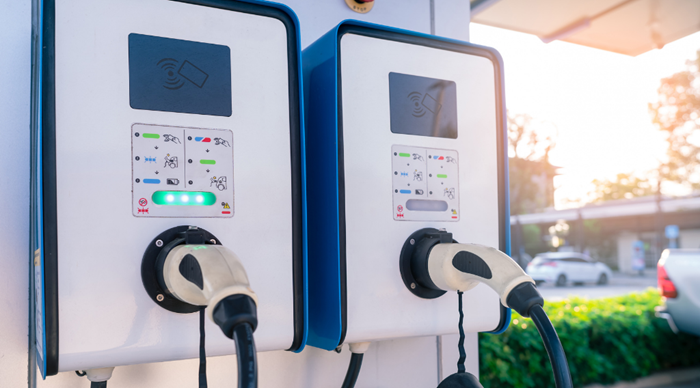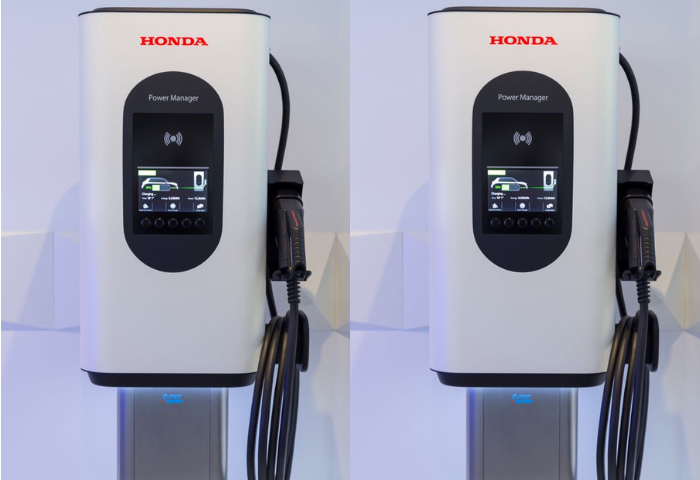Comprehensive Guide to the Chevy Bolt Level 1 Charger
In the realm of electric vehicles (EVs), understanding the nuances of charging infrastructure is key. For Chevy Bolt level 1 charger owners, the Level 1 charger serves as a fundamental component of their charging arsenal. Let’s delve into what makes this charging solution unique and indispensable.
1. What is a Chevy Bolt Level 1 Charger?
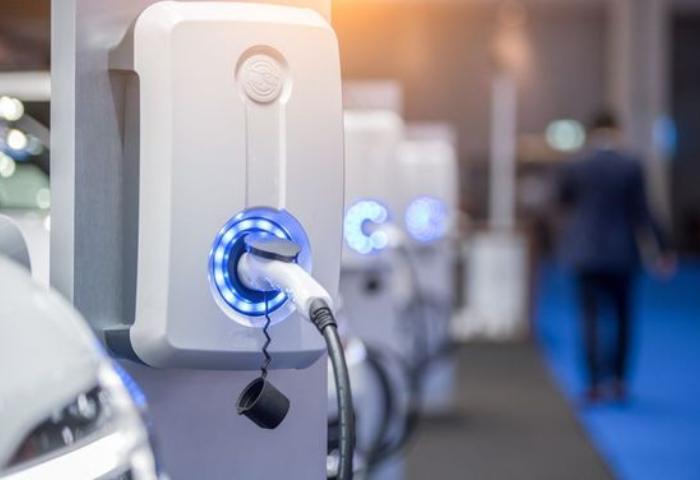
1.1 Understanding the basics of a Level 1 charger
A Chevy Bolt Level 1 charger refers to the standard charging cable and adapter that comes with the Chevrolet Bolt EV for Level 1 charging. Level 1 charging is the simplest and most basic form of electric vehicle (EV) charging, typically using a standard household electrical outlet.
Here are some of the basics of a Level 1 charger:
Voltage and Current: Level 1 charging operates on a standard 120-volt AC household electrical outlet. The charging cable typically draws a maximum current of 12 amps, though some EVs may have adjustable settings to draw less current if needed.
Charging Rate: Level 1 charging is the slowest of all charging levels, providing a charging rate of around 2 to 5 miles of range per hour, depending on the vehicle’s efficiency and battery size. For example, a full charge for a Chevrolet Bolt EV using Level 1 charging can take approximately 10–12 hours.
Charging Cable: The Level 1 charging cable supplied with the Chevrolet Bolt EV is usually equipped with a standard household plug on one end to connect to a 120-volt outlet and a J1772 connector on the other end to plug into the vehicle’s charging port.
Ease of Use: Level 1 chargers are very easy to use since they can be plugged into any standard electrical outlet found in homes or businesses. However, the slower charging speed means they are best suited for overnight charging or for topping up the battery during the day.
Portability: Level 1 chargers are typically lightweight and portable, allowing for easy transport if needed. This can be convenient for EV owners who may need to charge their vehicles at different locations, such as when traveling.
1.2 Benefits of using a Level 1 charger for your Chevy Bolt
Using a Level 1 charger for your Chevy Bolt EV offers several benefits, particularly in situations where Level 2 or DC fast charging options are not readily available. Here are some benefits of using a Level 1 charger for your Chevy Bolt:
Convenience: Level 1 chargers can be plugged into any standard 120-volt household electrical outlet, making them highly convenient for charging at home, work, or other locations where Level 2 or DC fast chargers may not be accessible.
Cost-Effectiveness: Since Level 1 chargers utilize existing household electrical infrastructure, there is typically no need for additional installation costs. This makes Level 1 charging a cost-effective option for EV owners, especially for those who have limited charging needs or shorter daily commutes.
Versatility: Level 1 chargers are portable and can be easily transported, allowing Chevy Bolt EV owners to charge their vehicles at various locations, such as friends’ or family members’ houses, hotels, or campsites, as long as a standard electrical outlet is available.
Safety: Level 1 charging operates at lower power levels compared to Level 2 or DC fast charging options, reducing the risk of overheating or overloading electrical circuits. This makes Level 1 charging a safe and reliable option for long-term use, especially when using reputable charging equipment.
Battery Health: Level 1 charging typically delivers a slower charging rate compared to higher-level chargers, which can be beneficial for battery health over the long term. Slower charging rates may help reduce stress on the battery and prolong its lifespan, although this largely depends on individual charging habits and preferences.
Emergency Charging: In emergency situations where access to higher-level charging infrastructure is unavailable or compromised, Level 1 chargers can provide a reliable means of recharging your Chevy Bolt EV, ensuring that you can maintain mobility when needed.
2. How do Install a Level 1 Charger for Chevy Bolt?
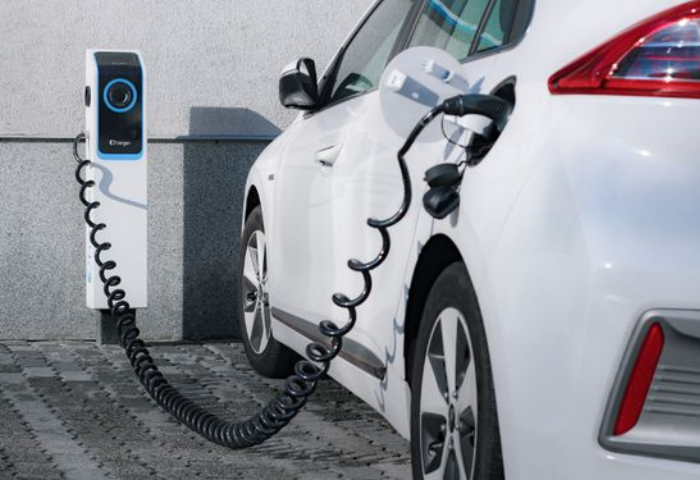
2.1 Steps to set up a Level 1 charger at home
Installing a Level 1 charger for your Chevy Bolt EV at home is a relatively simple process that can be completed by following these steps:
Select a Suitable Location
Choose a location near where you park your Chevy Bolt EV that has access to a standard 120-volt household electrical outlet. Ensure that the outlet is easily accessible and located within reach of the charging cable.
Check the Capacity
Before plugging in your Level 1 charger, check the electrical capacity of the outlet and the circuit it is connected to. Make sure the outlet is on a dedicated circuit with the appropriate amperage rating to handle the charging load of the Level 1 charger without overloading the circuit.
Inspect the Charging Cable
Thoroughly inspect the Level 1 charging cable for any signs of damage or wear. Ensure that the cable is free from cuts, fraying, or exposed wires. If the cable appears damaged, do not use it, and contact the manufacturer for a replacement.
Plug in the Charger
Plug the Level 1 charging cable into the standard 120-volt household electrical outlet. Ensure that the outlet is compatible with the charger’s plug type, and securely insert the plug into the outlet until it clicks into place.
Connect to the Vehicle
Open the charging port on your Chevy Bolt EV and plug the other end of the Level 1 charging cable into the charging port. The charging connector should securely lock into place, and you may hear a click when it is fully inserted.
Monitor Charging
Once the Level 1 charger is connected to both the outlet and the vehicle, monitor the charging process to ensure that it initiates correctly. Your Chevy Bolt EV’s dashboard display should indicate that charging is in progress, and you may hear the sound of the charging system activating.
Safety Precautions
While charging, avoid placing the charging cable in areas where it could be damaged or create a tripping hazard. Ensure that the cable is kept clear of water, snow, or other environmental hazards, and do not run it through doorways or under carpets where it could become pinched or damaged.
Charging Completion
Allow the Chevy Bolt EV to charge until the battery reaches your desired state of charge or until the charging process is complete. The charging status may be displayed on the vehicle’s dashboard or through the Level 1 charger’s indicator lights, if equipped.
Unplug and Store
Once charging is complete, safely unplug the Level 1 charging cable from both the outlet and the vehicle. Store the charging cable in a clean, dry location away from direct sunlight and extreme temperatures to prolong its lifespan.
2.2 Tools required for the installation process
The installation process for a Level 1 charger for your Chevy Bolt EV typically requires only basic tools that you may already have at home. Here’s a list of tools commonly needed for the installation process:
Screwdriver: A flathead or Phillips screwdriver may be needed to remove outlet covers or secure mounting brackets.
Adjustable Wrench: An adjustable wrench may be required to tighten or loosen nuts and bolts during installation.
Pliers: Pliers may be useful for handling and securing wiring connections.
Voltage Tester or Multimeter: A voltage tester or multimeter is essential for verifying that the electrical outlet has power and determining the voltage.
Extension Cord (Optional): Depending on the distance between the electrical outlet and the parking location of your Chevy Bolt EV, you may need an outdoor-rated extension cord to reach the vehicle.
Work Gloves: Work gloves can protect your hands when handling electrical components or working in tight spaces.
Safety Glasses: Safety glasses can protect your eyes from debris or accidental splashes when working on the installation.
Ladder or Step Stool: If the electrical outlet is located in a high or hard-to-reach area, a ladder or step stool may be necessary for access.
Cable Management Clips (Optional): Cable management clips can help secure the charging cable to walls or other surfaces to prevent tripping hazards and keep the cable organized.
Electrical Tape: Electrical tape can be used to secure wire connections and provide additional insulation.
Wire Strippers and Wire Cutters: If you need to make or adjust wiring connections, wire strippers and wire cutters will be necessary to prepare the wires properly.
3. Tips for Efficient Charging with Chevy Bolt Level 1 Charger
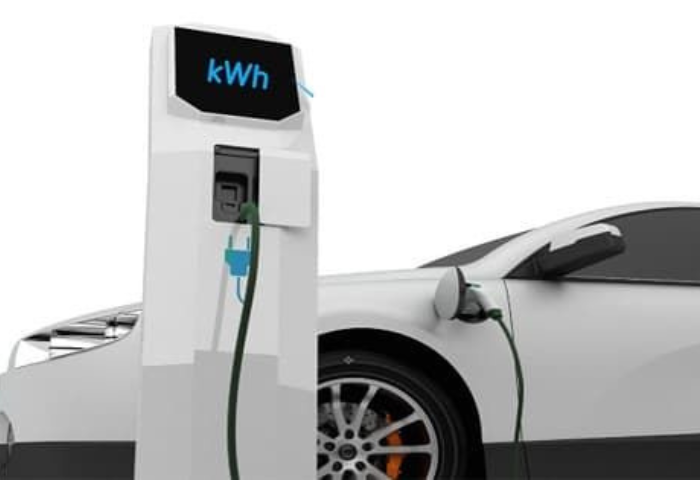
3.1 Best practices for maximizing charging efficiency
Maximizing charging efficiency with a Chevy Bolt Level 1 charger involves adopting several best practices to ensure optimal charging performance and battery health. Here are some tips:
Charge Overnight: Since Level 1 charging is relatively slow, it’s best to charge your Chevy Bolt EV overnight when the vehicle is not in use. This allows ample time for the battery to reach a full charge without impacting your daily schedule.
Plug in Whenever Possible: Take advantage of any opportunity to plug in your Chevy Bolt EV, even if only for a short period of time. Every bit of charge added helps extend your driving range and reduces the need for longer charging sessions later.
Maintain a Regular Charging Routine: Establish a regular charging routine to ensure that your Chevy Bolt EV is consistently topped up and ready for your daily commute. Charging to a set level each night can help optimize battery health and maximize driving range.
Preconditioning: Use the Bolt EV’s preconditioning feature to heat or cool the cabin while the vehicle is still plugged in. This helps minimize the impact on battery range by using grid power instead of draining the battery while driving.
Monitor Charging Progress: Keep an eye on the charging progress using the vehicle’s dashboard display or the Level 1 charger’s indicator lights, if equipped. This allows you to track charging status and estimate when the battery will reach a full charge.
Avoid Deep Discharges: Try to avoid letting the battery level drop to very low levels before recharging. Lithium-ion batteries, like those used in the Chevy Bolt EV, tend to perform best when kept within a moderate state of charge (typically between 20% and 80%).
Reduce vampire drain: Even when the car isn’t moving, its systems still use some energy. Minimize this “vampire drain” by ensuring that the vehicle is fully powered down when not in use and by unplugging the charger when charging is complete.
Monitor Charging Temperatures: Extreme temperatures, both hot and cold, can affect charging efficiency and battery health. Avoid charging in extreme temperatures whenever possible, and consider parking in a shaded area or garage to moderate temperature fluctuations.
Keep Charging Equipment Clean and Dry: Regularly inspect and clean the Level 1 charging cable and connector to ensure optimal performance. Keep the charging equipment dry and protected from moisture to prevent damage and ensure safety.
3.2 Common mistakes to avoid when using a Level 1 charger
Using a Level 1 charger for your electric vehicle (EV) is relatively straightforward, but there are some common mistakes that users should avoid to ensure safety, efficiency, and optimal performance. Here are some common mistakes to avoid when using a Level 1 charger:
Using Unreliable or Damaged Equipment: Always use a reliable and properly maintained Level 1 charger that is compatible with your EV. Avoid using damaged charging cables or adapters, as they can pose safety hazards and may damage your vehicle’s charging system.
Overloading Electrical Circuits: Make sure that the electrical outlet you’re using for Level 1 charging is on a dedicated circuit with the appropriate amperage rating. Avoid overloading the circuit by running other high-power appliances or devices simultaneously, as this can cause tripping breakers or electrical hazards.
Using Improper Extension Cords: If you need to use an extension cord to reach your vehicle, make sure it is properly rated for outdoor use and has the correct wire gauge to handle the charging load. Using an undersized or damaged extension cord can lead to voltage drops, overheating, and fire hazards.
Not Monitoring Charging Progress: It’s essential to monitor the charging progress periodically to ensure that the charging process is proceeding as expected. Check the vehicle’s dashboard display or the Level 1 charger’s indicator lights, if equipped, to track charging status and estimate the remaining time.
Charging in Extreme Temperatures: Avoid charging your EV with a Level 1 charger in extreme temperatures, as this can affect charging efficiency and battery health. Extremely hot or cold temperatures can lead to slower charging speeds, reduced battery capacity, and increased degradation over time.
Leaving Charging Cables Exposed to Hazards: Keep the charging cable and connector protected from damage and environmental hazards such as water, snow, ice, or debris. Avoid running the cable across driveways or walkways where vehicles or foot traffic could damage it.
Ignoring Safety Precautions: Always follow basic safety precautions when using a Level 1 charger, such as wearing appropriate personal protective equipment, keeping the charging area well ventilated, and avoiding contact with live electrical components.
Neglecting Regular Maintenance: Regularly inspect and clean the Level 1 charging cable, connector, and outlet to ensure optimal performance and safety. Remove any debris or dirt from the connectors, and check for signs of wear or damage that may require repair or replacement.
4. Comparing Level 1 vs. Level 2 Chargers for Chevy Bolt

4.1 Differences in charging speed between Level 1 and Level 2 chargers
Here’s a comparison table highlighting the main differences in charging speed between Level 1 and Level 2 EV chargers:
| Charger Level | Voltage | Maximum Current | Typical Power Output | Approx. Range Added Per Hour of Charging (Miles) |
| Level 1 | 120V AC | 12 amps | 1.44 kW | 2 – 5 |
| Level 2 | 240V AC | 16 – 80 amps | 3.84–19.2 kW | 10 – 30+ |
Note: Charging speed can vary depending on factors such as the EV’s battery capacity, charging rate, and efficiency.
4.2 Factors to consider when choosing between Level 1 and Level 2 chargers
When choosing between Level 1 and Level 2 chargers for your electric vehicle (EV), several factors should be considered to ensure that you select the option that best suits your needs and circumstances. Here are some key factors to consider:
Charging Speed: One of the most significant differences between Level 1 and Level 2 chargers is charging speed. Level 2 chargers offer faster charging times compared to Level 1 chargers due to their higher voltage and current capabilities. Consider your typical driving habits, daily mileage, and the amount of time your vehicle will be parked at a charging location when evaluating charging speed requirements.
Home Charging vs. Public Charging: Determine whether you primarily intend to charge your EV at home or rely on public charging infrastructure. Level 1 chargers are suitable for home charging and can be plugged into standard household electrical outlets, while Level 2 chargers are commonly found at public charging stations, workplaces, and residential installations.
Installation Costs and Requirements: Evaluate the installation costs and requirements associated with Level 1 and Level 2 chargers. Level 1 chargers typically require minimal installation and can be plugged into existing household electrical outlets, whereas Level 2 chargers may require professional installation and may involve additional costs such as electrical upgrades and equipment installation.
Availability of Charging Infrastructure: Consider the availability and accessibility of Level 1 and Level 2 charging infrastructure in your area. Determine the proximity of public charging stations and the availability of Level 2 chargers at workplaces, shopping centers, and other locations frequented by EV drivers.
Charging Efficiency and Battery Health: Assess the impact of charging speed and frequency on charging efficiency and battery health. Level 2 chargers provide faster charging times, which may be beneficial for drivers with longer commutes or higher daily mileage. However, frequent fast charging may accelerate battery degradation over time, whereas slower Level 1 charging may be gentler on the battery.
Cost of Equipment and Operation: Compare the cost of Level 1 and Level 2 charging equipment, including charger purchase or installation costs, electricity rates, and any additional fees associated with public charging. Consider the long-term cost-effectiveness of each charging option based on your charging needs and driving habits.
Future-Proofing and Flexibility: Consider future-proofing and flexibility when choosing between Level 1 and Level 2 chargers. While Level 1 chargers offer basic charging capabilities, Level 2 chargers provide greater flexibility and scalability, allowing for faster charging speeds and potential integration with renewable energy sources or smart charging technologies.
In essence, the Chevy Bolt’s Level 1 charger epitomizes simplicity, efficiency, and adaptability. While it may not boast the lightning-fast charging speeds of its counterparts, its reliability and accessibility make it an indispensable companion for Bolt owners, providing a seamless charging experience wherever the road may lead.

Henry Michael is a leading expert in EV charging station research, specializing in innovative solutions for electric vehicle infrastructure. With a passion for sustainability and technological advancement, he is dedicated to advancing the accessibility and efficiency of EV charging worldwide.
